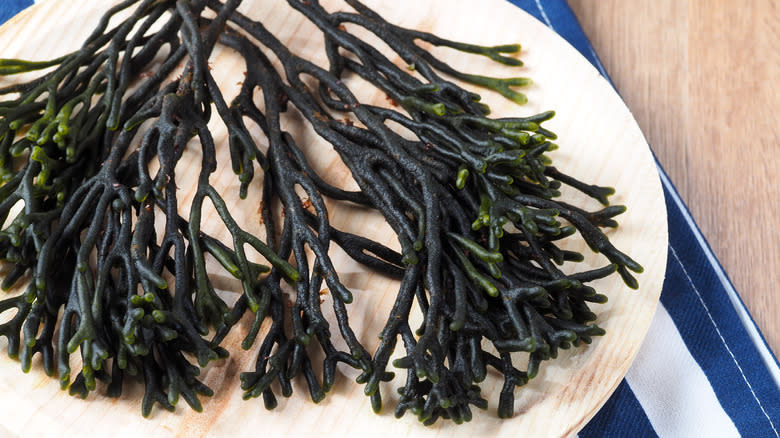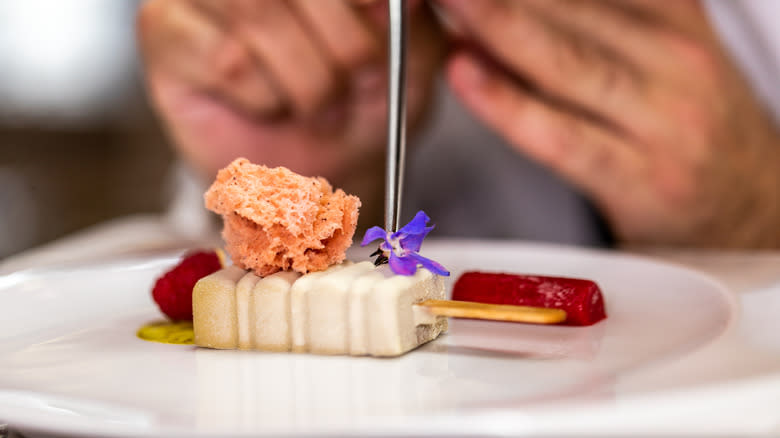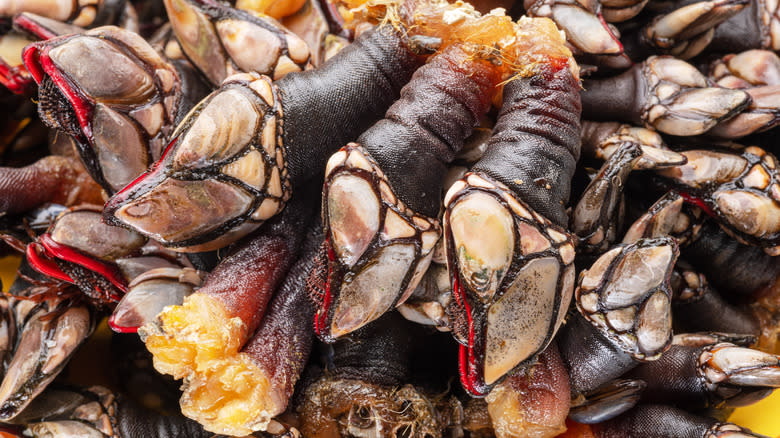The Rare Seaweed Coveted By Michelin Star Chefs

Michelin-star chefs always covet the best ingredients, be they uncommon, expensive, or both. One of them is velvet horn, a rare seaweed indigenous to the North Atlantic and particularly connected to the cuisine of Galicia, Spain.
While there are plenty of under-the-sea vegetables that you can eat, velvet horn is a standout for its uniquely chewy, shellfish-like texture and intensely oceanic umami flavor that stands up to being dried and then reconstituted in water or broth for use in cooking.
Also known as codium, velvet horn seaweed grows wild in a verdant layer, particularly in shallower waters off Galicia's Atlantic Coast. It's so prized that chefs as far away as Australia have dedicated supply lines for it and other seaweeds that grow in the area. Though it also grows in the Pacific Northwest and, rarely, off the coasts of Great Britain and Ireland, its most intrinsic culinary connection is to northern Spain, where fresh seafood and sea vegetables are the bedrock of the regional cuisine.
Read more: French Cooking Tricks You Need In Your Life
The Invisible Seaweed In Your Michelin Star Meal

Velvet horn seaweed's incredible flavor and texture mean that chefs typically show it off in its raw or reconstituted form, perhaps in a croqueta — a nod to Galicia — fried in tempura or as a saline, umami garnish. Using seaweed like this as a key ingredient is common to other seaweeds, like red dulse, with its salty, bacon-like taste. Still, Michelin-star chefs also covet seaweed for other, less obvious reasons.
If you've ever sampled a fruity fluid gel on a dessert or a softly set milk pudding or vegan jelly, you've probably had seaweed to thank for it — it was just invisible on the plate. Common thickeners and emulsifiers used in iconic dishes of molecular gastronomy like agar-agar, carrageenan, and sodium alginate (used in spherification) are all derived from algae and seaweeds; they're just used in service of thickening and emulsifying, rather than flavoring.
The Link Between Velvet Horn Seaweed And Another Rare Ingredient

Velvet horn seaweed is particularly prized in Galicia because of its connection to another rare local delicacy also coveted by Michelin-star chefs. In Spanish, this seaweed is called "alga percebe," or percebe seaweed. The percebe, known in English as a gooseneck barnacle, is one of the world's most sought-after and rare shellfish, often costing upward of $220 per kilogram.
Unlike the seaweed that shares its name, which grows in shallower Atlantic waters, percebe barnacles thrive in the tumultuous, rocky surf of Galicia's Atlantic coast, making their harvesting exceptionally dangerous. These conditions give them their incredible meaty texture and overwhelming taste of the sea, both of which are emulated by velvet horn seaweed at a much lower cost to both the consumer and the harvester.
This is where velvet horn seaweed gets both its name and its status as an ingredient for Michelin-star chefs — though rare; it's nothing compared to the gooseneck barnacle it emulates.
Read the original article on Daily Meal.

 Yahoo News
Yahoo News 
